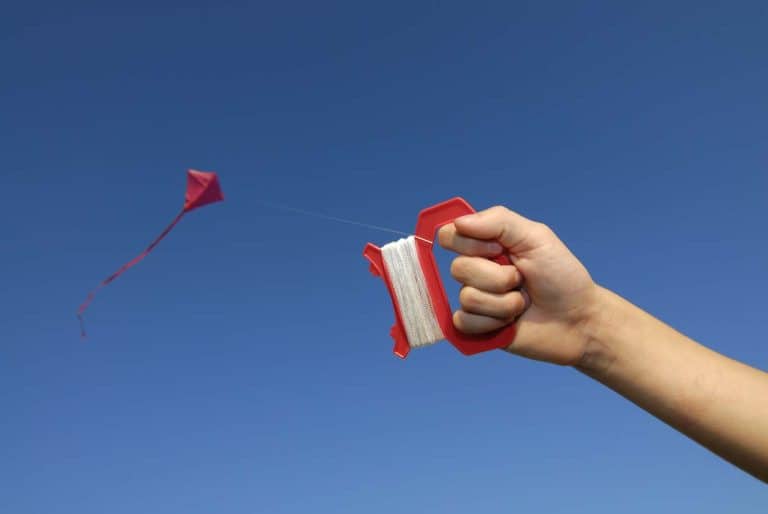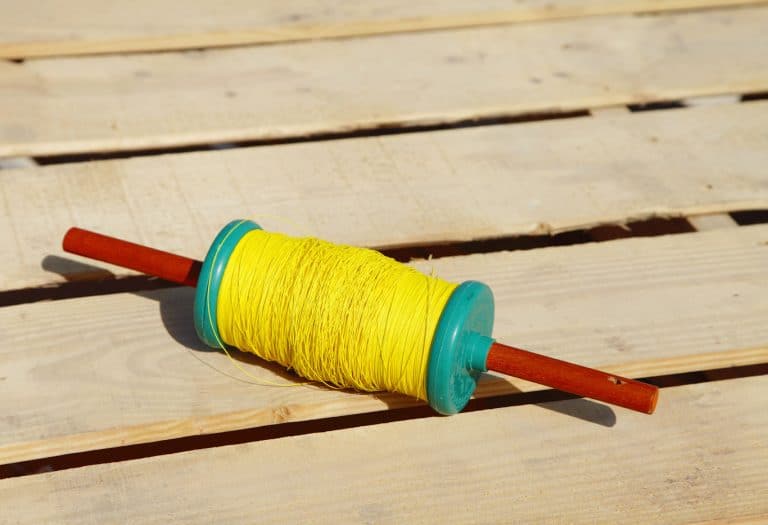The 4 Best Materials For A Kite
Good kites can be made from ripstop polyester, nylon, parachute material and plastic. The overall best material is the ripstop polyester because it is lightweight and more resistant to wear and tear.
You can make kites from almost anything – paper, plastic bags, nylon, fabric, etc.; however, these materials may not be the most ideal for kitemaking. According to the kite’s manufacturer, the differences in these materials can also vary in quality and grade.
This article will serve as a guide to different types of materials used in kites production. However, before we get into the fabrics and how to identify the best ones suited for your use, let’s talk about the components of a kite and the different functions of the material.
What Are The Components Of A Kite (And The Materials Of Each)?
A kite consists of 3 main components, namely:
- The kite body
- The bridle
- The control line
You can further break down these significant components into sub-components, all working together to ensure your kite flies correctly and safely.
The Kite Body
The kite body is always light and sturdy. It primarily consists of different fabrics and materials such as Polyester, Ripstop nylon, Mylar, and Tyvek. These materials make up the outer covering of the kite.
The body of the kite also includes the framework. This framework consists of lightweight materials such as plastic or wood. The framework, also known as the kite’s spine, must be sturdy and straight. Kite spines commonly come with fiberglass spar, carbon spar, maple spar, or birch spar.
The cross spar that runs across the spine is made from the same material and usually has the same diameter.
The Bridle
The kite bridle is what gives you control over how your kite flies. The harness is what connects the control line to the kite. The bridle must always be at least double the length of the kite, as short bridles sometimes affect the flight motion of the kite.
There are different kinds of bridles needed for a kite. These include the single point, the double point, the three-point, and the multi-point bridle. Giant kites require multi-point bridling to enable them to withstand strong winds. It, in turn, prevents the framework or spine from breaking.
The Control Line
The control line gives you control over your kite and how it flies. If the control line is of poor quality or not sturdy enough, it negatively affects kite flight.
A thick and sturdy line increases the wind resistance of the kite. Wind resistance is the primary difficulty encountered when flying a kite. Twisted nylon and cotton lines are the best materials, especially single-line kites.
Other subcomponents of a kite include:
- Kite Tail – is a lightweight material primarily found in flat kites or strong wind kites. Its primary function is to keep the kite pointed into the wind.
- Tie – A line used to join a part of the kite to the other.
- Kite Line – This line is used to attach stabilizing objects to the tail of a kite.
- Anchor – A small object used to hold down the kite. (Source)

What Is A Kite Material?
While people made the first kites from wood and cloth materials, the growth in technology has permitted several changes in kite material that offer better features at affordable rates. Although You can make a kite from any material, especially a homemade kite or a fun project for kids, some fabrics guarantee better output.
A Kite material is the fabric that is used in building a kite. Modern-day kite needs to prioritize any lightweight, easy to work with, strong, durable material. An almost zero porosity level and different color and size ranges are also other characteristics considered when choosing a kite to be purchased.
Different materials and building methods will be required to get a high-performing kite model, depending on the type of kite you’re flying. Kites don’t typically consist of a single piece of fabric. Instead, they combine several structures and materials interconnected by careful and modern seaming and stitching techniques to give the best value for money.
What Are The Best Materials For A Kite?
Ripstop Polyester
The ripstop polyester fabric is commonly confused as ripstop nylon fabric. You can see the difference in these materials’ chemical composition of the fibers used to weave these materials.
They are mostly cheaper than ripstop nylon kites and thus make them a perfect option for family or children kites. They are durable and of good quality and come in a very affordable range.
Ripstop Nylon
The ripstop nylon fabric is a lightweight but sturdy material woven in a “crosshatch” pattern with ripstop reinforcement threads. It is also woven with strong and filling yarns to ensure that you can easily and better manage tears. (Source)
They are available in a variety of sizes, thicknesses, and ranges. They come coated to prevent stretches. These coats can also make them waterproof, fireproof, or tear-resistant. They are high-quality materials and can be pretty expensive. This durable material can present as a stiff fabric or soft material. (Source)
Parachute Fabric
Parachute fabric is a term used for fabrics close to the types used in making parachutes. Most parachute fabrics are lightweight and fire and tear-resistant.
It is often used to differentiate between excellent quality ripstop materials and cheap ones.
While suitable ripstop nylon materials are often grouped with parachute fabrics, not all parachute fabrics can group as ripstop nylon grades. These materials are also very sturdy, and you can use them for heavy-duty purposes.
Polyester
Polyester is a cheap synthetic polymer material made from purified terephthalic acid (PTA). This material is a good option for watersport kites. Polyesters can also be artificial or natural. Synthetic fibers have high-level resistance to water and wind.
Polyester and ripstop polyester are the usual first picks as a kite option because of their high UV resistance.
Things To Consider Before Choosing The Best Kite Material
When choosing the best kite to suit your personal needs, you must consider several steps. These steps are influenced by several factors, including why you need a kite and the environment where you intend to fly your kite.
These factors include but are not limited to:
Fabric
When choosing your kite, make sure to ask questions about the type of material used for the outer covering of the kite. There are waterproof kites suitable for watersports. You also have other ranges, including tear-resistant to prevent quick tear damages.
There are also kites made from UV-resistant fabrics that are sturdy and durable, thereby providing great value for money.
Visual Appeal
Modern kite designs are available in all color ranges that do not undermine the quality or durability of the kite.
Environment And Climate
When choosing a kite, you should consider the environment in which you will fly a kite and the climate in that environment. UV-resistant materials are most suitable for warm-weather climates, while waterproof materials are best for cold-weather climates.
The reason for purchasing the kite is also a contributing factor. Kites for Kitesurfing or snowboarding require different and sturdier materials than those required for family or kids usage.
Sources
- “Ripstop,” Wikipedia accessed December 3, 2021, https://en.m.wikipedia.org/wiki/Ripstop#Ripstop_nylon
- Skelton, J., N. ABBOTT, and P. Opt. “Lightweight stretch fabric for parachute canopies.” In 5th Aerodynamic Deceleration Systems Conference, p. 1358. 1975.







